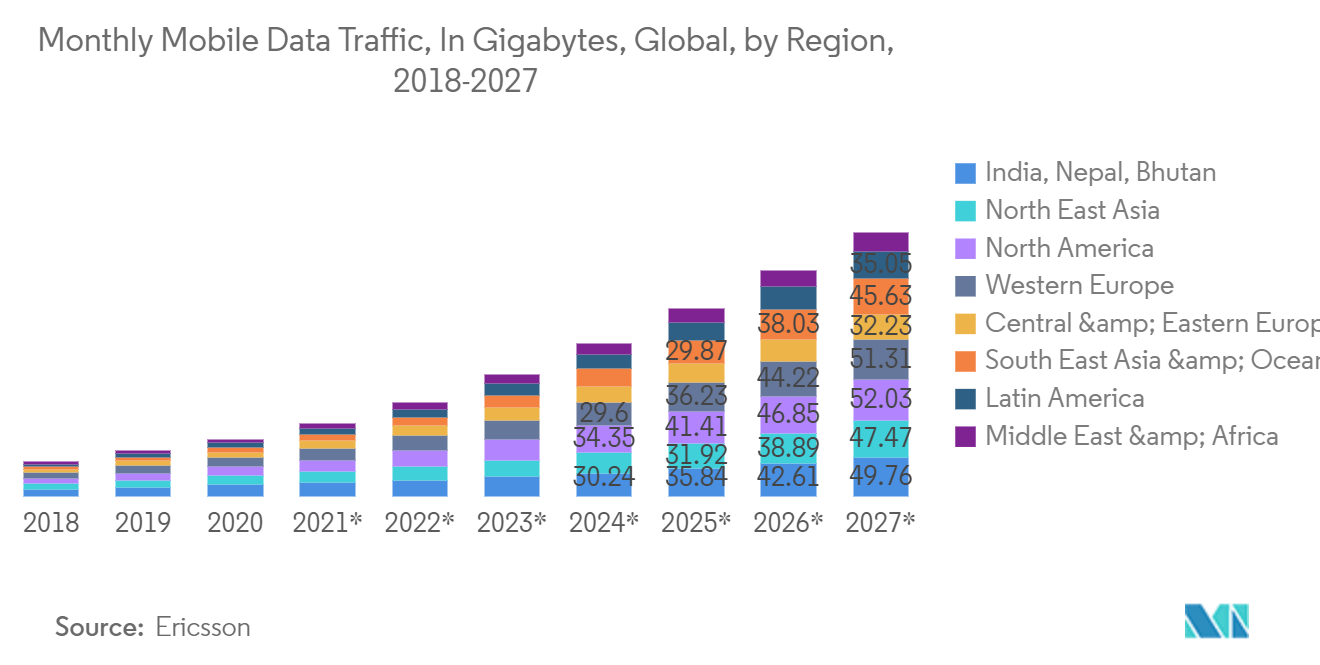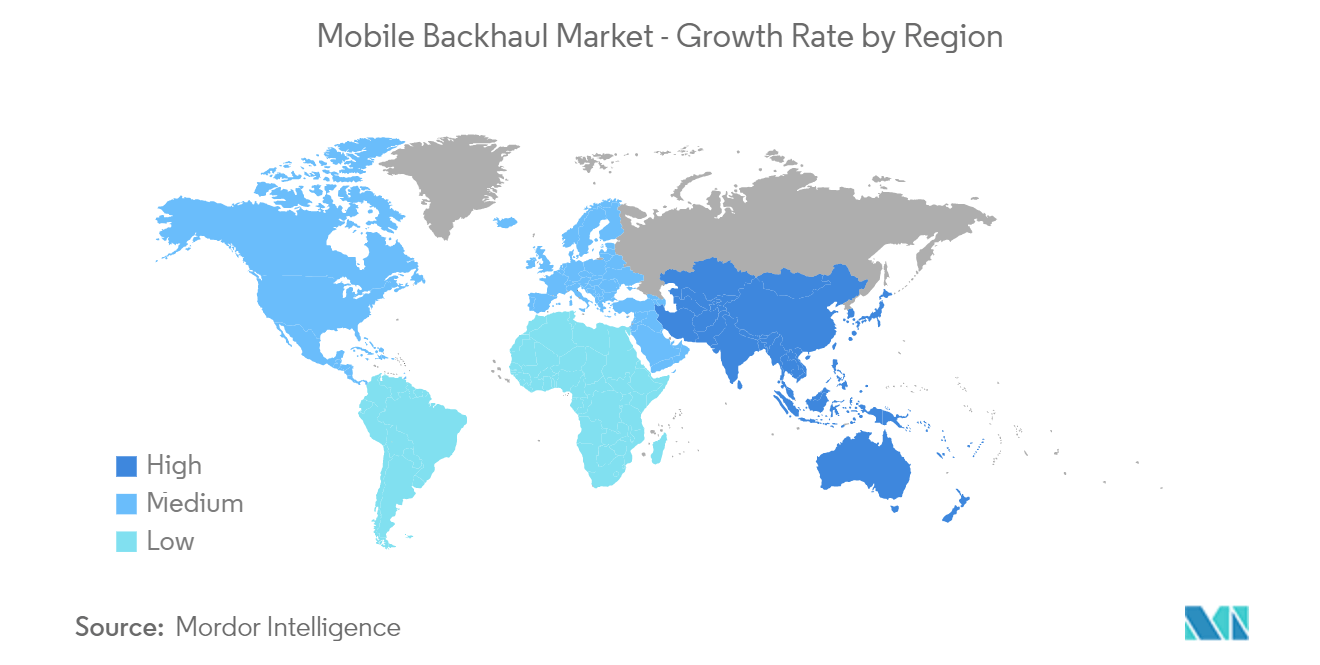Market Trends of Mobile Backhaul Industry
This section covers the major market trends shaping the Mobile Backhaul Market according to our research experts:
Growing Demand for Smartphones and Connected Devices Drives the Market Growth
- Mobile networks are being developed to respond to the growing broadband usage. Mobile data services are well on to becoming a requirement for network consumers. A backhaul service portfolio gives operators direct access to innovation and quality. The benefits of backhaul services are the ability, accessibility, and increasing data speed for smartphone users.
- Depending on local market conditions, traffic growth can be volatile between years and vary significantly between nations. Globally, the increase in mobile data traffic per smartphone can be attributed to three key drivers: increased device capabilities, data-intensive content, and data consumption as network performance continues to improve. According to Ericsson, these differences can be seen in Sub-Saharan Africa, where the average monthly mobile data usage per smartphone is estimated to be 4.6 gigabytes (GB), and the Gulf Cooperation Council (GCC) countries, where the average monthly mobile data usage per smartphone was 25 GB last year. The global monthly average consumption per smartphone is expected to be 19 GB, which is expected to reach 46 GB by the next five years.
- Globally, a significant rise in the use of connected devices, owing to the high adoption of IoT, is expected to drive the market for mobile backhaul. Mobile data traffic is expected to increase rapidly during the forecast period. According to Ericsson, the monthly mobile data traffic per device reached 26.76 GB in North America. In the Middle East and Africa, that number stood at 11.01 GB in the current year. By the next four years, it is estimated that the average monthly data traffic per device in Western Europe would reach 51.31 GB.
- Consumers continue to demand faster and more reliable internet connections as video becomes more embedded in social media applications, and consumers increasingly watch TV online. The carriers may continue to invest in their infrastructure to improve the user experience and maintain, or attempt to grow, the market share.

Asia Pacific is Expected to be the Fastest Growing Market
- As connectivity within the region increases, the cellular backhaul demand and satellite-based backhaul would keep their prominence in Asia after seeing significant growth. With new LTE licenses popping up in every country in Asia and the growth of broadband services in rural areas, there is now a strong need for satellite services everywhere, not only for coverage matters but also for the fast acquisition of new customers. The demand in Asia for cellular backhaul by satellite is certainly strong, which caters to a demand for mobile backhaul.
- Countries across Asia-Pacific are transitioning from voice-only mobile phone use to data-intensive and cloud-centric applications, including video streaming, telemedicine, e-agriculture, and distance learning. However, many countries' rural and remote areas need to be served due to geography, infrastructure reliability, and low population density challenges.
- The presence of multiple semiconductors and mobile device manufacturers helped the market, as the adoption and penetration of smartphone and mobile devices in the developing region have been high. Additionally, this has allowed supply chain presence in the region to complement the market. The ecosystem supporting the market has allowed the market to remain a rapidly growing market.
- Mobile networks continue to play an important role in increasing social and economic inclusion in India, Nepal, and Bhutan. 5G would be essential to achieving India's digital inclusion goals, particularly extending broadband to rural and distant residences. The improved mobile broadband is creating the groundwork for the government's "Digital India" vision by allowing citizens to access public services.
- According to Erisccson, the average data traffic per smartphone is expected to rise from 25 GB per month last year to approximately 54 GB per month by the next five years, representing a 14% CAGR. Total mobile data traffic in India is expected to expand at a 19% CAGR from 18 exabyte (EB) per month in the previous year to 53 EB per month by the next five years. This is due to rapid growth in smartphone users and an increase in average smartphone usage. Mobile data traffic per smartphone in South East Asia and Oceania is predicted to reach approximatly 54 GB per month in 2028, a CAGR of 28 percent, making it the fastest-growing area.


